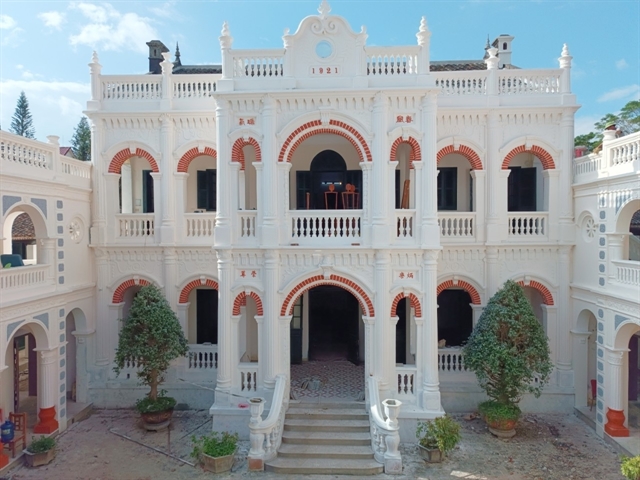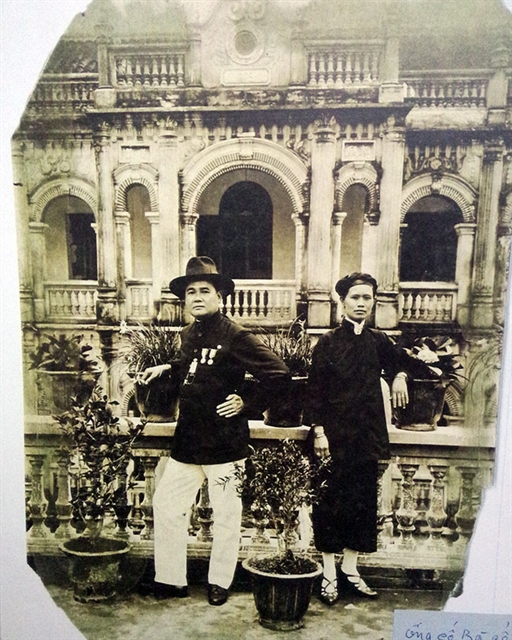
The original architecture and structures of the Hoàng A Tưởng mansion have been preserved intact throughout the restoration process. Photo baolaocai.vn
LÀO CAI — The restoration and enhancement project for the Hoàng A Tưởng mansion heritage site in Bắc Hà District, Lào Cai Province is expected to be finished in October 2024.
After being restored and renovated in 2007, it has become a popular attraction in the Bắc Hà region and Lào Cai Province. Following the 2007 restoration, some features of the mansion deteriorated, including a tilted original roof and some tiles had been damaged.
To ensure its artistic integrity, while maintaining the original state of the historical site, the Lào Cai Department of Tourism has proposed restoration for the mansion.
Recently, social media has seen a surge of controversial opinions regarding the new colour applied to the walls of the mansion.
While some have expressed support for the change, many others argue that the new paint colour is inappropriate and fails to preserve the building's original features and historical character.
Permanent Deputy Party Secretary of the Provincial Party Committee and Chairman of the Provincial People's Council, Vũ Xuân Cường, told Lào Cai Newspaper that the restoration project respects the scientific research on colour and composition provided by experts.
The Department of Tourism held a meeting to gather expert opinions, including an online consultation with experts from the Nouvelle-Aquitaine region in France, to select the most appropriate paint colour.
"While many prefer a weathered appearance, this can actually affect the structural integrity of the building," Hà Văn Thắng, Director of the Lào Cai Department of Tourism, told Lao Động (Labor) Newspaper.
Hoàng A Tưởng mansion is located close to the banks of the Bắc Hà River in Bắc Hà town, which is about 70 kilometres from Lào Cai City in the northwest mountainous region.

Hoàng Yến Tchao (left) and his first wife in the Hoàng A Tưởng mansion. Photo courtesy of the Lào Cai Tourism Information and Promotion Centre
The former owner, Hoàng Yến Tchao and his son, Tưởng, were influential figures during the semi-feudal colonial period in the twentieth century, with Tchao serving as the hereditary tribal leader of the Bắc Hà region.
Although Tchao is Tày ethnicity, the locals at the time referred to him as King of Mèo (Mông) because the Mông ethnic people previously accounted for nearly 70 per cent of the region's population.
According to the Lào Cai Tourism Information and Promotion Centre, construction of the mansion began in 1914 and was finished by the end of 1921.
Tchao employed a feng shui master to select the ideal location and engaged French and Chinese architects for the design, resulting in a harmonious blend of European and Asian architectural styles.
The bricks and tiles used in the construction were crafted by the finest artisans from the region and China, while iron, steel and cement were sourced from the Red River Delta.
The mansion has 36 rooms over a total area of 10,000 square metres, across a closed rectangular layout.
The Tày people have a custom of naming a house after the name of their son who lives with their parents in adulthood. Therefore, the mansion is called Hoàng A Tưởng.
Hoàng A Tưởng mansion was recognised as a national cultural and historical relic in 1999. — VNS
OVietnam